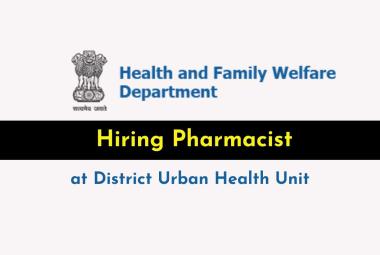{ DOWNLOAD AS PDF }
 ABOUT AUTHORS:
ABOUT AUTHORS:
Akash M Patel*, Nirav N Patel, Prakash A Sathwara
*Faculty of Pharmacy, Dharmsinh Desai University,
Nadiad, Gujarat
Aku.pharmacy@gmail.com
ABSTRACT
Quantitative analysis of any drug is an important tool in an industry. It is important to determine that the raw material, intermediate products as well as final products meet its specifications and are of required quality. The number of drugs and drug formulations introduced into the market has been increasing at an alarming rate. These drugs or formulations may be either new entities or partial structural modification of the existing ones or novel dosage forms.
Spectrophotometry and HPLC methods are considered to be most suitable for estimation of the drugs present in pharmaceutical dosage forms.
· Literature review reveals that several spectroscopic and Chromatographic method have been reported for estimation of TOL and DIC alone as well as with other drugs.
· Simultaneous equation, dual wavelength difference UV spectrophotometry and First derivative spectroscopic method is available for this combination.
· The aim of work is to develop and validate cost effective First derivative method in water and RP-HPLC method for simultaneous estimation of TOL and DIC in bulk and Tablet dosage form.
· Development of UV spectrophotometric method.
[adsense:336x280:8701650588]
REFERENCE ID: PHARMATUTOR-ART-2305
|
PharmaTutor (ISSN: 2347 - 7881) Volume 3, Issue 1 Received On: 09/11/2014; Accepted On: 20/11/2014; Published On: 01/01/2015How to cite this article: AM Patel, NN Patel, PA Sathwara; Analytical Method Development and Validation for Simultaneous Estimation of Tolperisone Hydrochloride and Diclofenac Sodium in Bulk and Pharmaceutical Formulation; PharmaTutor; 2015; 3(1); 40-57 |
INTRODUCTION
Muscle spasms, which can affect any part of the body, are an involuntary contraction in the muscle tissue. Depending on the muscle's size and location, it might be sharp and painful or nearly imperceptible. A series of spasms or permanent spasms are called a spasmism. A spasm may lead to muscle strains or tears of tendons and ligaments, if the force of the spasm exceeds the tensile strength of the underlying connective tissues, such as with a particularly forceful spasm, or in the case of weakened connective tissues. An effective treatment might come from physical therapy, dietary changes, medical intervention, or some combination of the three.
Most muscle spasms fall into one of two categories1. There may not be enough of certain chemicals necessary for a muscle to function properly, called electrolytes, which can cause nerve signals to not travel correctly. Alternately, the nerve that triggers the muscle might be at fault, whether due to a problem with the nerve itself or with the brain. The common denominator is that the muscle is contracting inappropriately and without the person’s control2.
In medicine a spasm is a sudden, involuntary contraction of a muscle, a group of muscles,or a hollow organ such as a heart, or a similarly sudden contraction of an orifice. It most commonly refers to a muscle cramp which is often accompanied by a sudden burst of pain, but is usually harmless and ceases after a few minutes. There is a variety of other causes of involuntary muscle contractions, which may be more serious, depending on the cause.
Causes of Muscle Spasm3
There are a number of reasons for muscle spasms. These include:
· Muscular fatigue, overuse or excessive stretching of muscles and prolonged periods of no movement – eventually, muscle cells run out of energy and fluid, become hyper excitable and develop a forceful contraction/spasm involving part of a muscle, the whole muscle, or even adjacent muscles.
· Dehydration and depletion of electrolytes also lead to muscle spasm and cramping.
· Abnormal supply of water, glucose, sodium, potassium, calcium, and magnesium upsets protein regulation required for normal contraction causing a muscle spasm.
· Systemic illnesses like diabetes, low red blood cell count, kidney disease and other hormonal concerns are potential causes of muscle spasms.
Classification of Drug Used for Muscle Spasms4:
Table 1: Classification of drugs used for Muscle Spasms
|
Peripherally acting Muscle relaxants
|
Non-depolarizing agent |
Curare alkaloids |
Tubocurarine, Dimethyltubocurarine |
|
4-Ammonium agents |
Atracurium, Cisatracurium,Gallamine |
||
|
Depolarizing agent |
Choline derivatives |
Succinylcholine, |
|
|
Ach release inhibitors |
Botalinum toxin |
||
|
Centrally acting Muscle relaxants |
Carbamic esters |
Meprobamate, Methocarbamol, Tybamate |
|
|
Benzodiazepines |
Diazepam, Lorazepam, Nitrazepam |
||
|
Anticholinergics |
Orphenadrine |
||
|
Piperidine derivatives |
Tolperisone, Eperisone |
||
|
Others |
Quinine, Baclofen, Thiocolchicoside |
||
|
Directly acting Muscle relaxants |
Dantrolene |
||
|
NSAIDs |
Diclofenac, Ibuprofen, Lornoxicam |
||
MATERIALS AND METHOD
Table 2 :Materials
|
Sr. No. |
Ingredient |
Supplier |
|
1 |
Tolperisone (TOL) |
Orbit pharmaceuticals ltd, Ahmedabad |
|
2 |
Diclofenac Sodium (DIC) |
Orbit pharmaceuticals ltd, Ahmedabad |
|
3 |
Ortho Phosphoric acid |
AR grade |
|
4 |
Tri ethylamine |
AR grade |
|
5 |
Acetonitrile |
HPLC grade, Merck |
|
6 |
Methanol |
HPLC grade, Merck |
|
7 |
Water |
HPLC grade |
EXPERIMENTAL METHOD
DEVELOPMENT AND VALIDATION OF FIRST ORDER DERIVATIVE SPECTROSCOPIC METHOD FOR ANALYSIS OF TOLPERISONE HYDROCHLORIDE AND DICLOFENAC SODIUM IN TABLET
Apparatus and Instruments
- Double beam UV-visible Spectrophotometer: Shimadzu, 1800.
· System controller: UV Probe 2.31
· Mode: Spectrum
· Scan speed: Medium
· Wavelength range: 400-200 nm
- Weighing balance:Shimadzu AUX 220
- Ultra Sonicator
- Borosil-Volumetric flasks of 10, 25, 50 and 100 ml (Borosil)
- Pipettes of 1, 2, 5 and 10 ml (Borosil)
Method Development:
Determination of the zero crossing points (Selection of wavelength)
From the overlaid first order derivative spectra of both the drug, DIC and TOL showed zero crossing at 248 and 226 nm respectively.At 248 nm DIC showed zero absorbance and TOL showed reasonable absorbance, while at 226 nm TOL showed zero absorbance and DIC showed reasonable absorbance. So these two wavelengths were selected for further measurement5.
Method Validation6-8
As per ICH guidelines Q2 (R1), the method validation parameters studied were so, linearity, accuracy, precision, limit of detection and limit of quantitation.
Linearity:
D1 Absorbance of standard solutions of DIC (2, 4, 6, 8, 10 µg/ml) were measured at ZCP of TOL (226 nm) and D1 Absorbance of standard solutions of TOL (5, 10, 15, 20, 25 µg/ml) were measured at ZCP of DIC (248 nm). D1 Absorbance for both the drugs were plotted against their respective concentrations to get linear regression line.
Precision
The repeatability was checked by repeatedly (n = 6) measuring D1 absorbances of DIC (6 μg/ml) and TOL (15 μg/ml).
The intra-day and inter-day precisions of the proposed method was determined by measuring the corresponding responses 3 times on the same day and on 3 different days over a period of 1 week for 3 different concentrations of DIC (2, 6 and 10 μg/ml) and TOL(5, 10 and 15μg/ml) respectively. The results were reported in terms of relative standard deviation.
Accuracy (Recovery study)
The accuracy of the method was determined by calculating recovery of DIC and TOL by the standard addition method. Known amounts of standard solutions of DIC (0, 2, 4 and 6) and TOL (0, 5, 10 and 15) were added to prequantified sample solution of DIC (4 µg/ml) and TOL (10 µg/ml). The solutions were measured at 226 nm for DIC and 248 nm for TOL and % recovery of the each sample was calculated.
Limit of Detection and Limit of Quantification
Limit of detection (LOD) and the limit of quantification (LOQ) were calculated using the standard deviation of intercept (σ) and slope (S) of the calibration curve.
LOD = 3.3 x σ/S
LOQ =10 x σ/S
Where, σ = the standard deviation of the response and S = slope of the calibration curve.
DEVELOPMENT AND VALIDATION OF RP-HPLC METHOD FOR SIMULTANEOUS ESTIMATION OF TOL AND DIC
Apparatus and instrumentation
- HPLC: Shimadzu 20-AT
· Column: BDS hypersil C18, (250mm × 4.6mm, 5µ)
· Manual Injector: Rheodyne Injector (Fixed Capacity Loop of 20 μl)
· Syringe: Hamilton syringe
· Pump: Binary pump, (Shimadzu, LC 20 AT)
· Detector: UV detector (PET), (SPD 20 AT)
- Weighing balance: Shimadzu AUX 220
- Digital pH meter: Chemiline
- Sonicator: Ultra sonicator
- Pipettes of 1, 2, 5 and 10 ml (Borosil)
- Volumetric flasks of 10, 25, 50 and 100 ml (Borosil)
- Measuring cylinder of 100 ml. (Borosil)
Linearity
Standard diluted stock solutions (0.2, 0.4, 0.6, 0.8, and 1.0 ml equivalent to 2.0, 4.0, 6.0, 8.0 and 10.0 µg/ml of DIC and 0.6, 1.2, 1.8, 2.4 and 3.0 ml equivalent to 6.0, 1.2, 1.8, 2.4 and 3.0 µg/ml of TOL) were transferred in a series of 10 mL volumetric flasks and diluted to the mark with methanol. An aliquot (20 µl) of each solution was injected under the operating chromatographic conditions as described earlier9. Chromatograms were recorded. Methanol (20 µl) blank was also injected under the same conditions and chromatogram of methanol was recorded for the correction of the response of methanol in the chromatograms containing responses of DIC and TOL. Calibration curves were constructed by plotting peak areas versus concentrations, and the regression equations were calculated. Each response was average of three determinations10
Precision
Repeatability was checked by repeatedly (n = 6) injecting the solution containing DIC (6 µg/ml) and TOL (18 µg/ml) and recording the chromatograms11
Intra-day and inter-day precisions of the developed method was determined by measuring the corresponding responses 3 times on the same day and on 3 different days over a period of 1 week for 3 different concentration of DIC (3.0, 6.0 and 9.0 µg/ml) and TOL (9.0, 18.0 and 27.0 µg/ml).
Accuracy
Accuracy of the method was determined by calculating percentage recovery of DIC and TOL by the standard addition method. Known amount of standard solutions of DIC (0, 4.8, 6 and 7.2 µg/ml) and TOL (0, 14.4, 18 and 21.6 µg/ml) were added to a pre-analyzed sample solution of DIC (6 µg/ml) and TOL (18 µg/ml). Each solution (20 μl) was injected in triplicate and the percentage recovery was calculated by measuring the peak areas and fitting these values into the regression equations of the calibration curves13
Limit of Detection and Limit of Quantification
Limit of detection (LOD) and the limit of quantification (LOQ) were calculated using the standard deviation of intercept (σ) and slope (S) of the calibration curve14.
LOD = 3.3 x σ/S
LOQ =10 x σ/S
RESULTS AND DISCUSSION
Method Development
The working standard solution of DIC and TOL were prepared separately in distilled water. They were scanned in the wavelength range of 200-400 nm. From the overlaid first order derivative spectra of both the drugs, it was observed that DIC and TOL show a zero crossing point at 248 nm and 226 nm respectively. These two wavelengths were employed for the determination of DIC and TOL. Overlain derivative spectra of both the drugs are shown in Figure 1

Fig: 3 Overlain first order derivative absorption spectra of tablet DIC (5 µg/ml) and TOL (15 µg/ml) in distilled water
NOW YOU CAN ALSO PUBLISH YOUR ARTICLE ONLINE.
SUBMIT YOUR ARTICLE/PROJECT AT editor-in-chief@pharmatutor.org
Subscribe to Pharmatutor Alerts by Email
FIND OUT MORE ARTICLES AT OUR DATABASE
VALIDATION OF THE DERIVATIVE SPECTROSCOPY METHOD
Linearity
The Beer’s law was obeyed. Linear correlation was obtained between D1 absorbance and concentration of DIC (2-10 μg/ml) and TOL (5-25 μg/ml). The linearity of the calibration curve was validated by the value of correlation coefficient of the regression (r). The optical and regression characteristics are listed in Table 3.

Table 3: Optical and regression characteristics (n=3)
|
Parameter |
DIC |
TOL |
|
Linearity range (µg/ml) |
2-10 |
5-25 |
|
Linearity equation |
y = -0.0263x + 0.0108 |
y = 0.0237x + 0.0077 |
|
LOD (µg/ml) |
0.1886 |
0.3111 |
|
LOQ (µg/ml) |
0.5659 |
0.9429 |
|
Correlation coefficient (r) |
0.9973 |
0.9954 |
Precision
The % RSD for repeatability of DIC and TOL were found to be 1.8618 and 0.8999 respectively. The value of % RSD for intra-day precision was found to be in the range of 0.93 – 1.06% and inter-day precision was found to be in the range of 1.19 - 1.31%, which indicated that the method was precise.
Table 4 : Repeatability Data (n=6)
|
Sr. No. |
Concentration (µg/ml) |
D1 Absorbance |
||
|
DIC |
TOL |
DIC |
TOL |
|
|
1 |
6 |
15 |
-0.142 |
0.369 |
|
2 |
6 |
15 |
-0.145 |
0.372 |
|
3 |
6 |
15 |
-0.141 |
0.365 |
|
4 |
6 |
15 |
-0.140 |
0.371 |
|
5 |
6 |
15 |
-0.145 |
0.374 |
|
6 |
6 |
15 |
-0.144 |
0.367 |
|
Mean |
-0.1428 |
0.369 |
||
|
SD |
0.0021 |
0.0033 |
||
|
%RSD |
1.8618 |
0.8999 |
||
Table 5: Intraday precision data for DIC and TOL
|
DIC |
TOL |
||||
|
Conc (µg/ml) |
D1 Abs Mean ± S.D. (n=3) |
% R.S.D |
Conc (µg/ml) |
D1 Abs Mean ± S.D. (n=3) |
% R.S.D |
|
2 |
-0.045 ± 0.00057 |
1.273 |
5 |
0.120 ± 0.001 |
0.8333 |
|
6 |
-0.139 ± 0.0015 |
1.096 |
15 |
0.366 ± 0.0035 |
0.95778 |
|
10 |
-0.255 ± 0.0030 |
1.194 |
25 |
0.586 ± 0.0045 |
0.7686 |
Table 6: Interday precision data for DIC and TOL
|
DIC |
||
|
Conc (µg/ml) |
D1 Abs Mean ± S.D. (n=3) |
% R.S.D |
|
2 |
-0.041 ± 0.00057 |
1.385 |
|
6 |
-0.142 ± 0.0015 |
1.073 |
|
10 |
-0.257 ± 0.0035 |
1.364 |
Accuracy
The recovery experiments were performed by the standard addition method. The mean recoveries were found to be 99.087 – 100.35 %and 99.93 – 100.46% forDIC and TOL, respectively. The recoveries results indicate that the proposed method is accurate. Results of recovery studies are shown in Table 5 and 6
Table 7: Recovery data of DIC (n = 3)
|
Level |
Sample Conc. |
Amt of Drug |
Total Conc. |
Amt of Drug recovered (µg/ml) |
Recovery % |
Mean ± |
%RSD |
|
50% |
4 |
2 |
6 |
5.922 |
98.716 |
100.35 ± 1.457 |
1.452 |
|
4 |
2 |
6 |
6.091 |
101.517 |
|||
|
4 |
2 |
6 |
6.049 |
100.817 |
|||
|
100% |
4 |
4 |
8 |
8.047 |
100.599 |
99.401 ± 1.068 |
1.074 |
|
4 |
4 |
8 |
7.883 |
98.545 |
|||
|
4 |
4 |
8 |
7.924 |
99.059 |
|||
|
150% |
4 |
6 |
10 |
10.013 |
100.13 |
99.087 ± 0.984 |
0.993 |
|
4 |
6 |
10 |
9.895 |
98.957 |
|||
|
4 |
6 |
10 |
9.817 |
98.174 |
Table 8: Recovery data of TOL (n = 3)
|
Sample Conc. |
Amt of Drug |
Total Conc. |
Amt of Drug recovered (µg/ml) |
Recovery % |
Level |
Mean ± |
%RSD |
|
10 |
5 |
15 |
14.851 |
99.00 |
50% |
99.93 ± 0.803 |
0.806 |
|
10 |
5 |
15 |
15.054 |
100.36 |
|
||
|
10 |
5 |
15 |
15.065 |
100.43 |
|
||
|
10 |
10 |
20 |
20.173 |
100.86 |
100% |
100.88 ± 1.637 |
1.623 |
|
10 |
10 |
|









